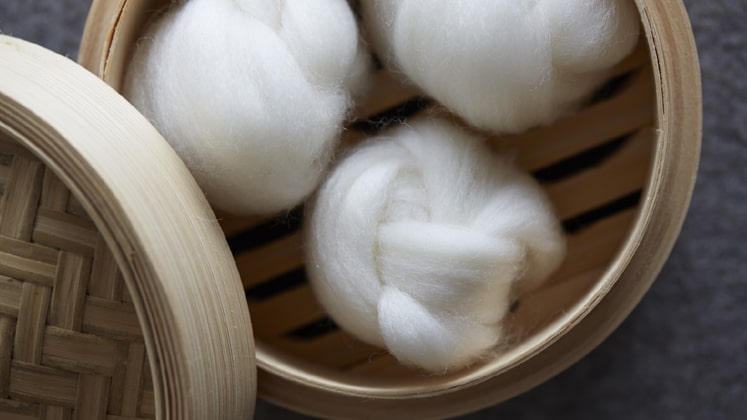Technology and new methodologies of doing regular work have vastly added to the quality, speed, and consistency of operations in all fields. Wool is no different, and historically, sheep selection techniques were based on subjective methods of sight and wool feel. Since then, much has changed, and Australian Merino wool has been completely revolutionised by the increased use of technology in all aspects of its collection and production, elevating the fibre to the world’s most premium ingredient for luxury, innovative and conscious apparel, and making Australian Merino wool the finest and softest in the world.
Australian Merino wool is regarded as being the best sheep’s wool for apparel because of how it feels against the skin of the wearer. It is the fineness of the fibres that makes Merino wool of today an incredibly soft, lightweight and breathable fibre. However, tracing the journey of wool is an interesting study in how a traditional product has advanced to meet global standards and demands. The two most important areas of advancement are in measurement techniques and breeding to get superior quality wool. The improvement in both these areas has grossly added to the appeal of wool and its growing acceptance in the increased number of product categories.
In the 1960s, wool was tested post-sale, but the woolgrower received no specific information on the characteristics of the wool they had produced and could not therefore objectively change their breeding selection. Around this time, pioneering Australian sheep geneticist Helen Newton Turner was instrumental in pushing the industry to use objective measurement techniques in breeding selection, but it wasn’t until the 1990s that this idea came to fruition.
Significant improvements in the objective measurement technologies in the 1990s resulted in both a pre-sale (Sirolan Laserscan) and on-farm (Sirolan Fleecescan®) instruments that objectively tested the fibre fineness and characteristics of wool. The Sirolan Fleecescan® instrument enabled real-time, in-shed measurement of fibre diameter and its variability, thus realising the dream put forward by CSIRO’s Helen Newton Turner some 50 years earlier for the use of objective measurement in sheep selection.
These measurement tools are now the standard procedure for the entire Australian wool clip, and since the adoption of the Sirolan technology in the 1990s, Australian Merino wool has continued to increase in quality and fineness. Today, all Australian wool is now measured prior to sale. Wool is prepared for sale according to subjective measurements when it first comes off the sheep’s back, and is then objectively measured off-farm by the Australian Wool Testing Authority.
Today, thanks to new technologies to test wool fineness and the rising demand for Superfine Merino wool, Australia is the largest producer of Merino wool for next-to-skin apparel. Because of the wide genetic pool of Australian sheep and innovative practices of loving Australian woolgrowers, Australian wool and specifically Australian Superfine Merino wool surpasses wool produced anywhere else in the world.
In 2018/2019, Australia produced more than 630,000 bales of wool finer than or equal to 18.5 micron. This means that of Australia’s total wool clip, more than one third of the wool produced is Superfine Merino wool or finer. It is this luxuriously soft fibre which is loved by luxury fashion and technical performance-wear brands across the world.
Along with being of very high quality, the wool industry is also dedicated to making wool’s environmental, health and wellbeing qualities more understandable and accessible. The Woolmark Company regularly invests in scientific research so that wool’s benefits can be quantified and communicated. In fact, research into the fineness and softness of superfine Merino wool has found that it is not an allergen and can actually benefit those suffering from skin conditions such as eczema.
This article has been contributed by The Woolmark Company.









